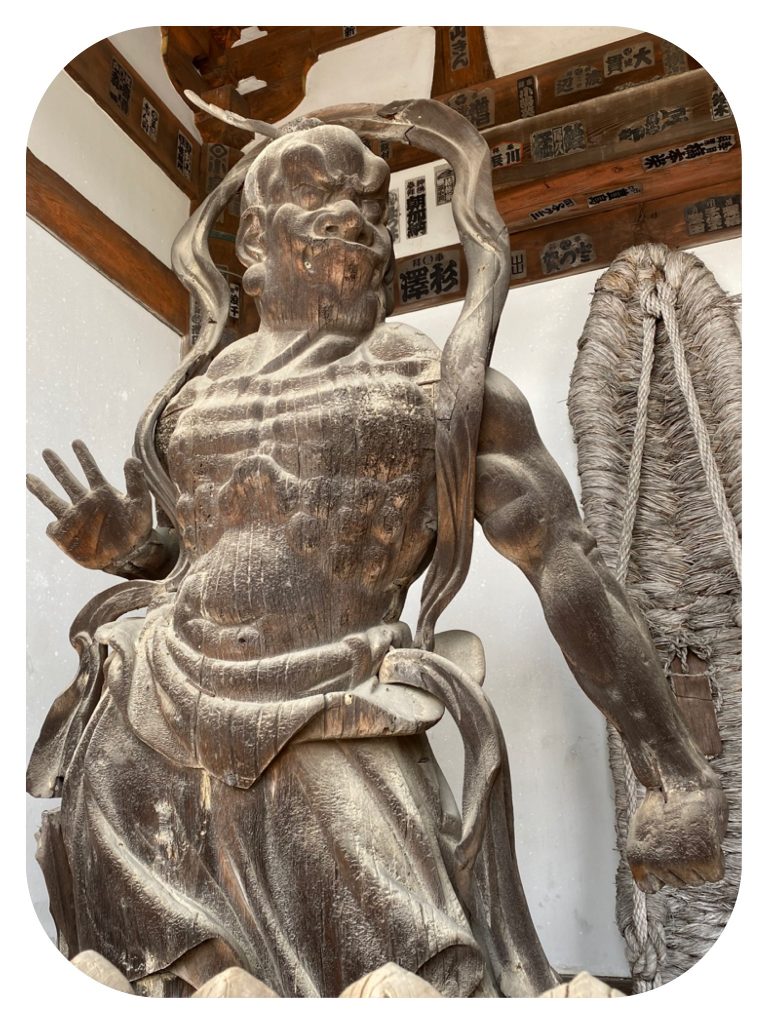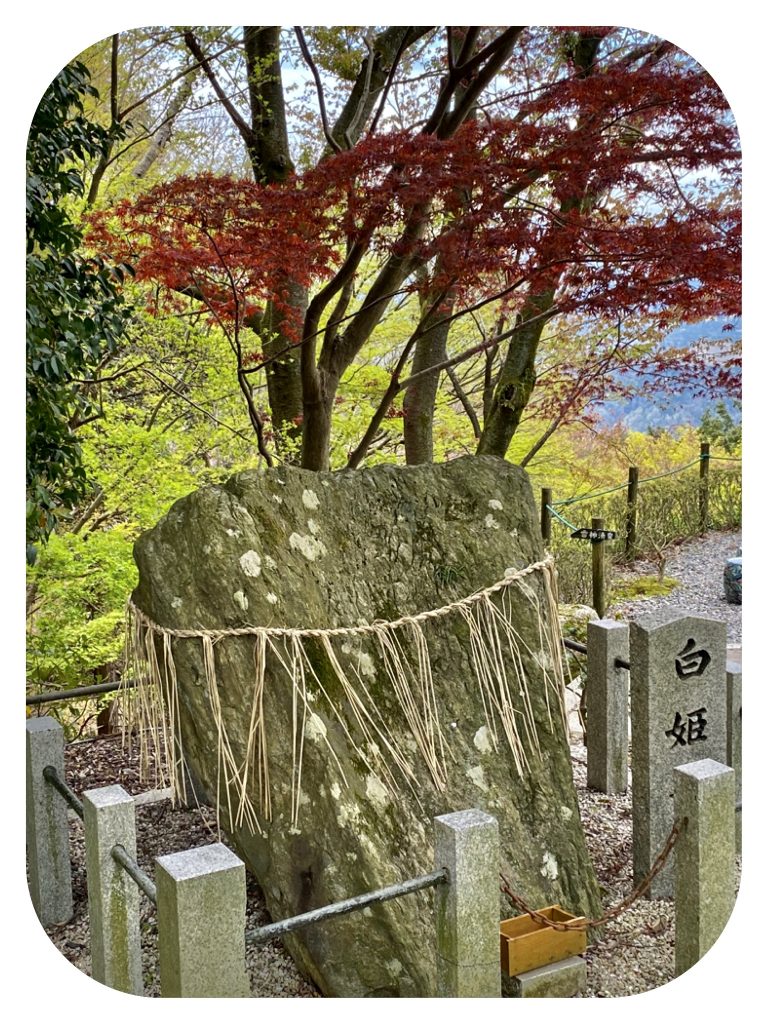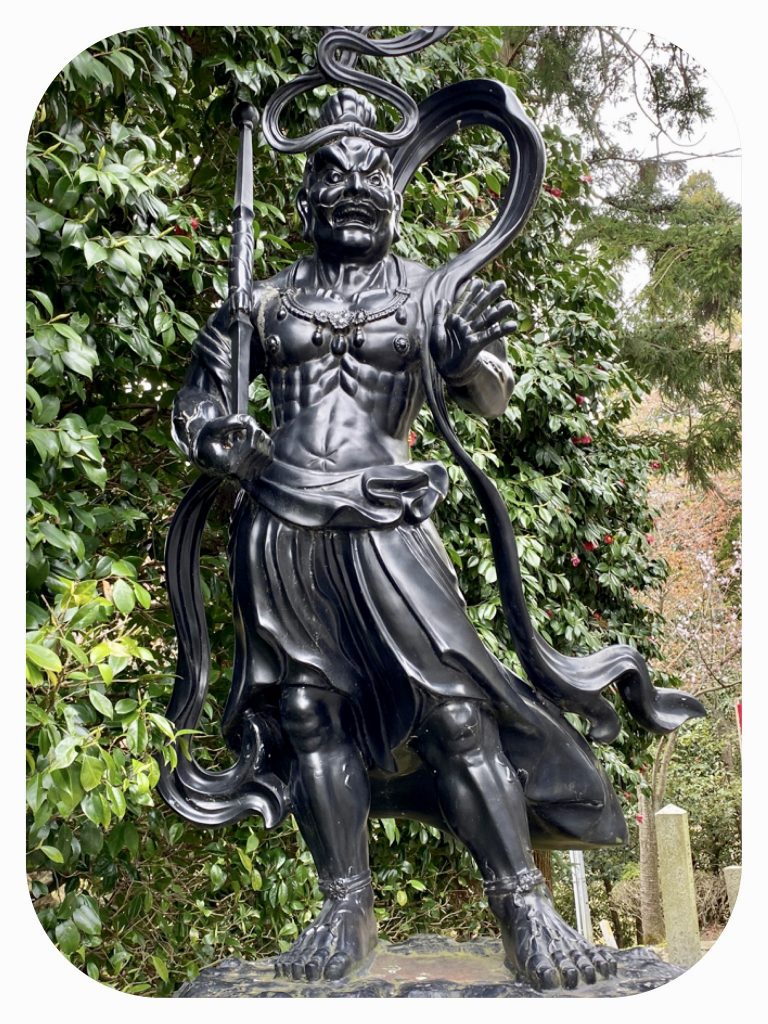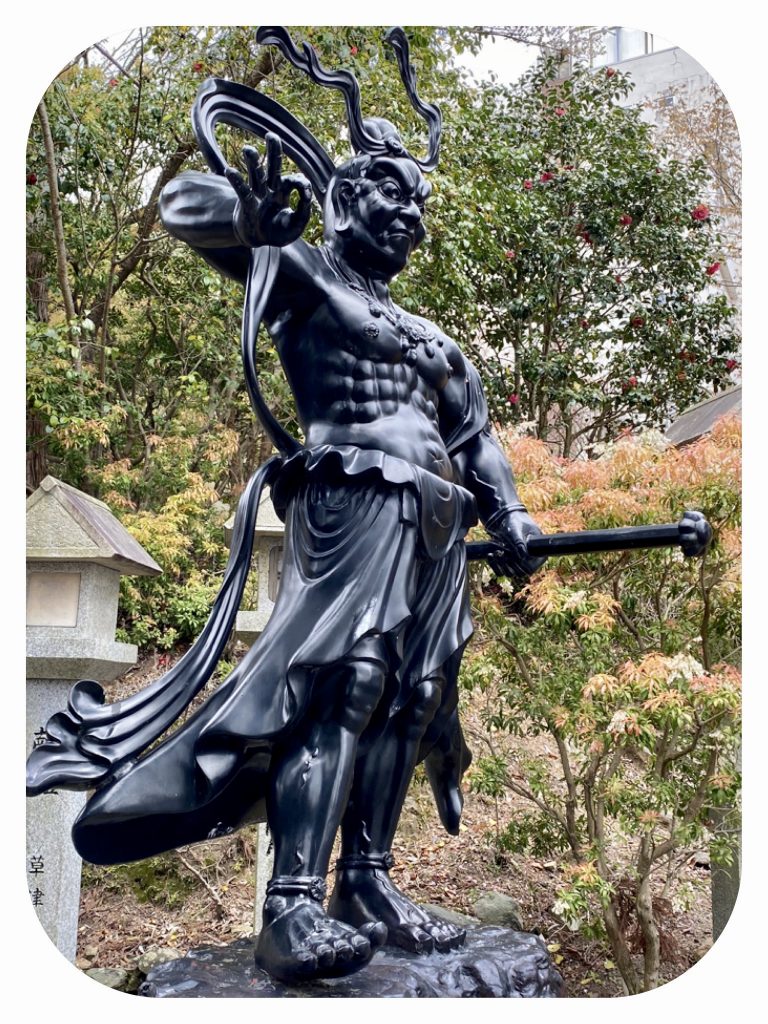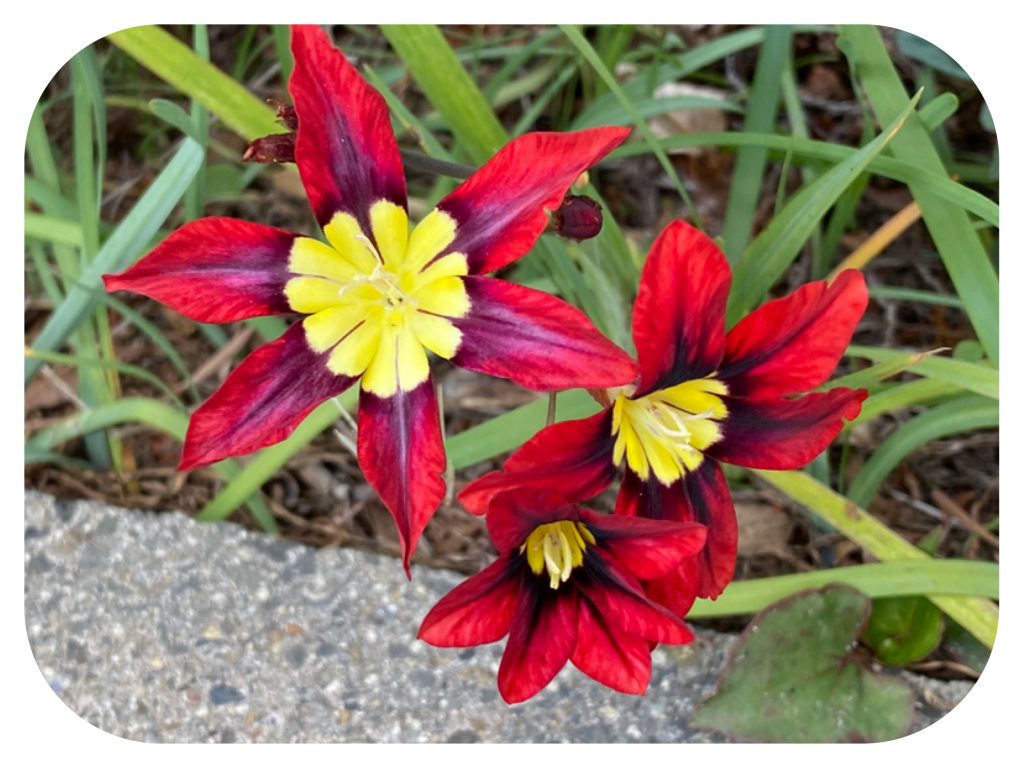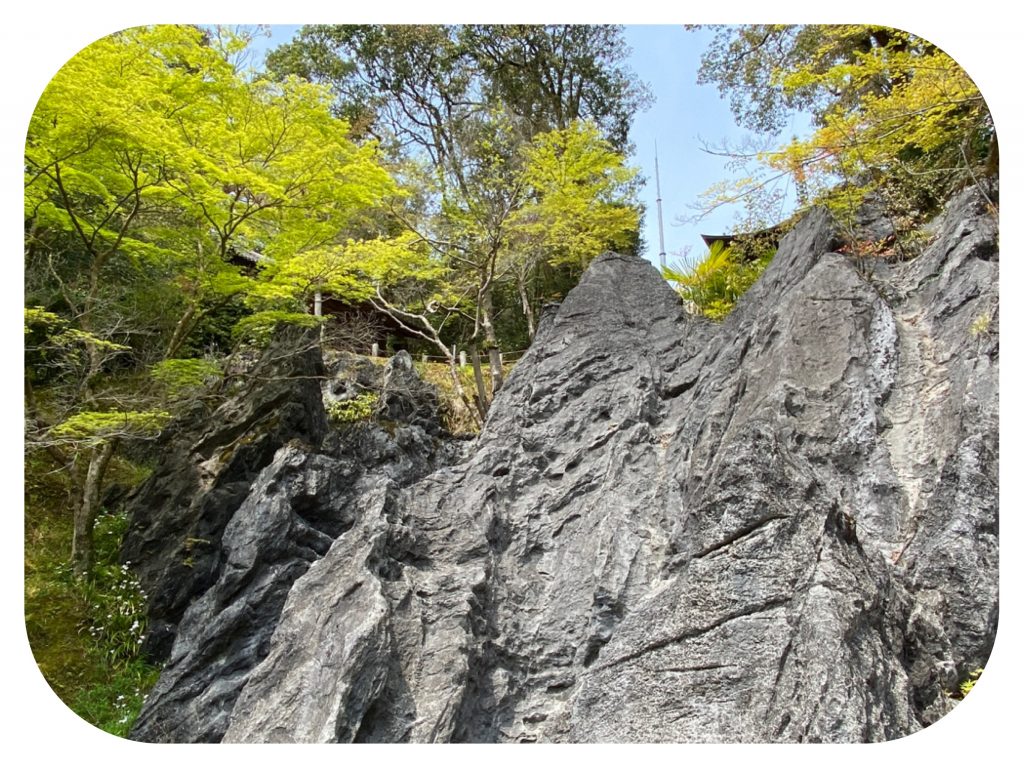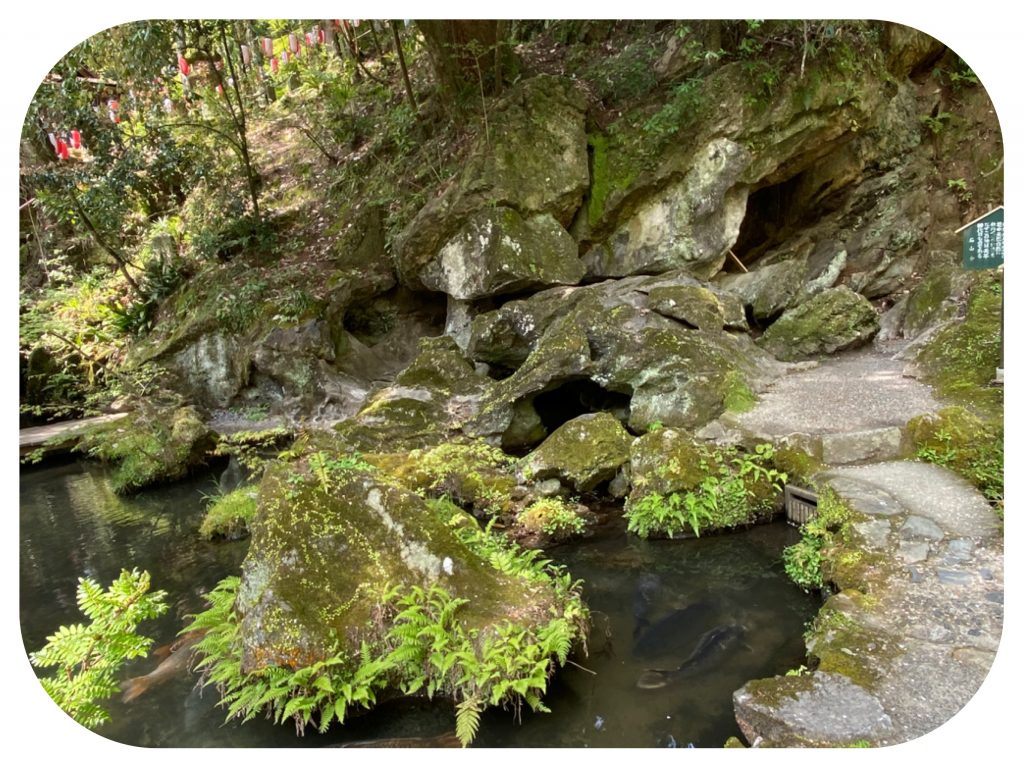Day 31 - The Road To Enlightenment - Walking The Saigoku Kannon Pilgrimage - Iwama-dera Temple #12 and Ishiyama-dera Temple #13 in Shiga, Japan

Day 31 - The Road To Enlightenment - Walking The Saigoku Kannon Pilgrimage - Iwama-dera Temple #12 and Ishiyama-dera Temple #13 in Shiga, Japan
Today was a bright and sunny day, but rain was predicted for the next few days.
We decided to visit two of our temples in Shiga today, and to do the rest of the walk from Bangai temple #2 in Eastern Kyoto to Otsu in Shiga, on one of the upcoming rainy days.
The first temple in Shiga prefecture, Ishiyama-dera, Temple #13, is located by Biwa lake and it is easy to access.
Ishiyama-dera(石山寺, "Stony Mountain Temple") is a Shingon temple founded in 747 AD.
It is said that the female writer, Murasaki Shikibu, began writing “The Tales Of Genji” in Ishiyama-dera during a full moon night in August, 1004.
In commemoration, the temple maintains a “Genji room” featuring a life-size figure of Lady Murasaki in her honor.
We got the volume of the book translated to English from Chiko-Sensei, our first Japanese sensei in Miami, but I have not yet read the book.
The temple grounds feature big grey boulders protruding out of gigantic Wollastonite rock formations, which are said to be very rare in Japan.
The temple is dedicated to Niyori Kannon, and is said to bring the blessings of safe childbirth, protection from evil spirits, marriages, and good luck.
Outside of the temple gates, a few shops were selling sweets and green matcha tea, as well as souvenirs and amulets.
Around the corner, we saw a restaurant that looked very nice, and it was open.
We were not yet hungry, but we asked until what time they would be open and serving food.
They told us that the last order would be at four in the afternoon.
We promised to return after our walk up the mountain to Iwama-dera, Temple #12 and back.
Iwama-dera is a “Nansho temple.” (A temple that is especially hard to reach.)
I once read that a local bus goes up to the temple only once per month, but I am not sure that this is accurate information.
We started the walk to Iwama-dera, and soon the road became very steep.
My google map showed that the climb was only 400 meters above sea level, but it sure felt much steeper than this.
We had to stop to gather our breath every few hundred steps, but finally the road leveled out at the top and we walked to the temple.
To our delight, it was open and we even saw other people visiting and some work being done on one of the buildings.
We chanted, prayed, got our stamps and had some of the hot tea we had brought in our tea flask.
I bought chestnut cookies from the temple and we walked around the grounds.
It is not a big temple, and it is surrounded by a very lush forest.
Iwama-dera belongs to the Shingon sect of Buddhism.
In the Nara Period (710-794), a Buddhist Priest called Taicho carved the main statue, the thousand-armed bodhisattva Kannon.
The statue of Kannon here is also known as “Asekaki Kannon,“ (Sweating) or “Bokefuji Kannon,” (Power to prevent Dementia).
The Hondō dates back 500 years and is an impressive wooden structure.
Next to the Hondō is Bashō’s Pond, where it is said that Bashō wrote his famous “Frog Pond” haiku.
Basho, the great haiku poet, was a serious devotee of Kannon.
In 1687, while on his journey that is recorded in his travel diary, he came to a small hermitage on Iwama Mountain and stayed there in retreat for some time.
It is said that he wrote his Frog haiku at that time.
The haiku reflects a moment of spontaneous enlightenment, upon hearing the sudden sound of a frog plopping into the water.
Here is the famous haiku:
“Furu ike ya-kawazu tobikomu-mizu no oto.”
“Old pond — frogs jumped in — sound of water.”
Another structure that stood out is the Fudō-dō temple hall, which is dedicated to the Light King, Fudō Myōō, where the annual goma fire ceremony is performed.
It was built during the Heian era (794 AD – 1185 AD).
It started to rain while we were making our way slowly down the steep mountain road.
We stopped to put on our raincoats and cover our day packs.
It was nearly four when we got back to the little restaurant by Ishiyama-dera Temple.
They had taken in the signs, but they were happy to make our food.
We had a very special cast iron rice dinner set.
The rice was organic and cooked in heavy cast iron, which crusts the bottom of the pot.
The set included goma tofu, made from sesame seeds, and small accompaniments.
It was so nice to get out of the rain and eat a home cooked meal.
When we returned to our ryokan guesthouse in Kyoto, the night watchman handed us a pamphlet from the Kyoto National Museum.
They had planned an exhibition from April- June in celebration of the Goddess Kannon, with antique statues and scroll paintings, celebrating the Saigoku 33 temple pilgrimage.
Now the museum is closed until further notice and the opening date of the exhibitions is unknown.
I guess the lady at the front desk who took our body temperaturesa while checking us in, felt she needed to do something nice, and gave us the brochure with the English writing on the origin of the pilgrimage.
There was a time in Japan, when we checked into a ryokan, they made us matcha tea and gave us traditional sweets, while a traditionally dressed lady was plucking the strings of the Koto for our listening pleasure.
Upon checkout, we got gifts of handmade ceramic bowls or tea cups, small sake bottles or beautifully wrapped traditional miso or sweets.
This has been replaced by the busy tourism days, when upon check in you get a list of warnings of what you must do and are not allowed to do, written in bold letters in English, Korean and Chinese.
In these Coronavirus days, they look at us suspiciously over their face masks when we check in, point a temperature gun to our foreheads and pry into our whole itinerary.
I would suggest that if you are not stuck in Japan like we are, do not travel during the coronavirus times....
Wait for some measure of sanity to return to the planet....
Wishing you well, and please know that you are forever a blessed and beloved child of God.
Forever safe, forever powerful in your true identity in God.
Tali and Jules
Daily stats:
Steps walked - 24,634
18 km. walked
Active walking time - 4.5 hours
Total walking time today - 7 hours.
Total walking distance on the Saigoku to date - 615 km
Temple Visited:
Iwama-dera Temple #12 正法寺 (岩間寺 in Shiga
Ishiyama-dera Temple #13 石光山 (石山寺) in Shiga



